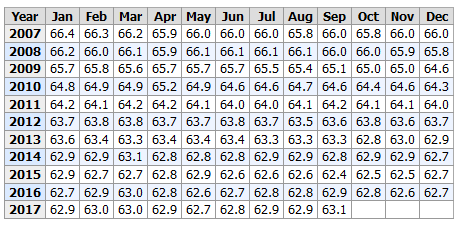Generally speaking, the economic news is good–the workforce participation rate is up and unemployment is down. That is a good thing. The only negative is the fact that according to CNBC America lost 33,000 jobs in the month of September. That loss is attributed to the hurricanes that hit Florida and the Gulf Coast states.
CNBC further reports:
Even with the surprise jobs number, the closely watched hourly wages figure jumped higher, to an annualized rate of 2.9 percent.
Economists surveyed by Reuters expected payroll growth of 90,000 in September, compared with 169,000 in August. The unemployment rate was expected to hold steady at 4.4 percent. It declined even as the labor-force participation rate rose to 63.1 percent, its highest level all year and the best reading since March 2014.
“The lousy returns from the September jobs report will make little impression on observers, who essentially gave the labor market a free pass due to the impact of Hurricanes Harvey and Irma,” said Curt Long, chief economist at the National Association of Federally Insured Credit Unions.
An alternate number that includes discouraged workers as well as those working part-time for economic reasons also tumbled, falling from 8.6 percent to 8.3 percent, its lowest reading since June 2007.
The Workforce Participation Rate increased to 63.1. The following chart showing changes in the Workforce Participation Rate is from the Bureau of Labor Statistics:
 As you can see, the rate is slowly inching upward.
As you can see, the rate is slowly inching upward.
According to Bloomberg News, Americans are going back to work.
Bloomberg reports:
Americans are coming off the labor market’s sidelines at a pace that intensified in September.
The number of people going from out-of-the-labor-market into jobs jumped to an all-time high last month, the Bureau of Labor Statistic’s employment report showed on Friday, even as the number of people flowing into unemployment fell. While these numbers can be volatile, they provide the latest confirmation that Americans are being pulled into work as the labor market tightens.
The positive changes in the economy are the result of the deregulation that has been going on since President Trump took office. There is still more deregulation needed. If all or part of the President’s tax reform proposals are put into effect, those reforms will also help encourage economic growth.


